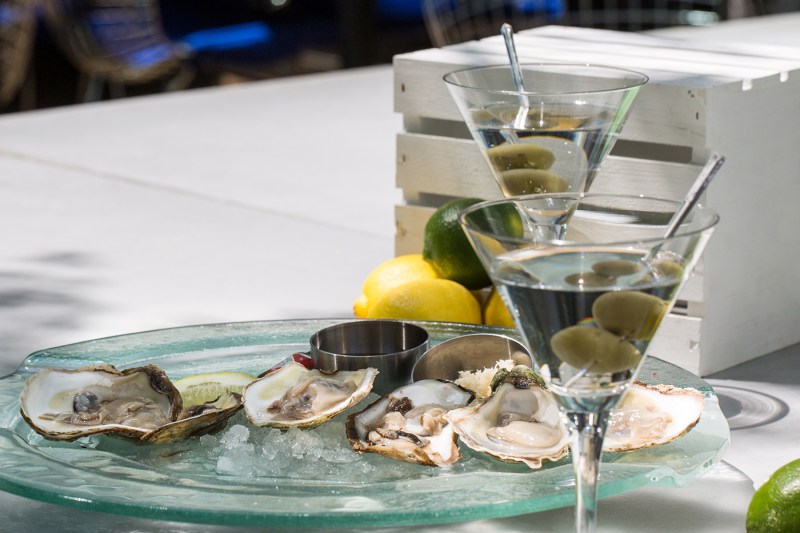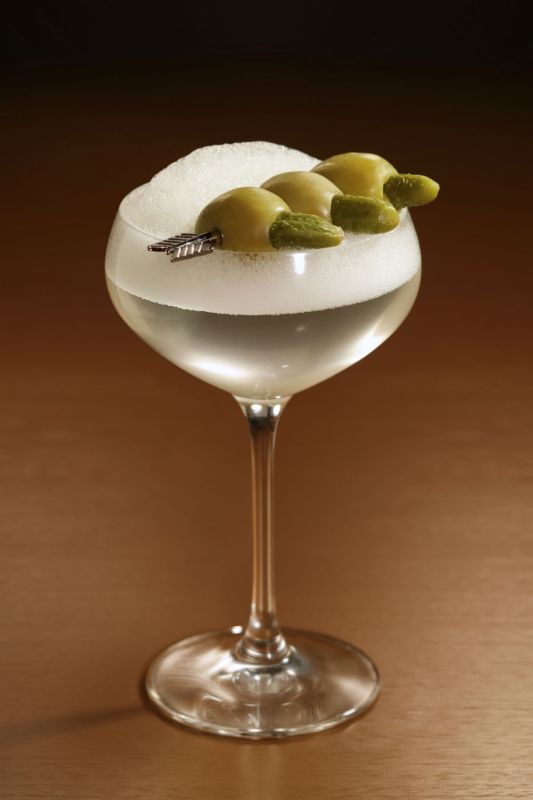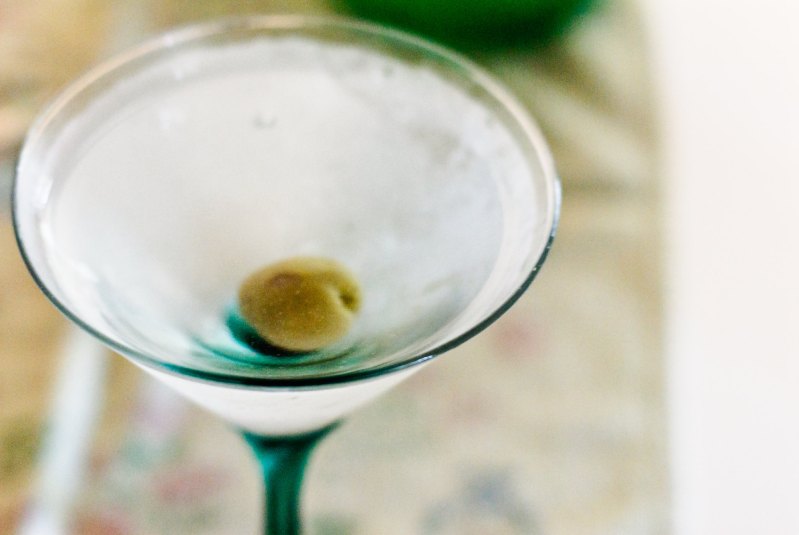
We all know that top-notch spy James Bond takes his Martini shaken, not stirred, but if you spend any amount of time around people who love Martinis (or Vespers, as Bond himself termed them), then you also know it’s a little more complicated than that. There are dirty Martinis and wet Martinis and dry Martinis — and don’t even get us started on the number of drinks that purely end in “-tini.” (Hint: there are hundreds.)
Even to an experienced drinker, all of the terms may seem like a bit much. In order to make your next Martini experience easier, we sat down with New York City bartender Tom Walker to find out how to order a Martini. Walker is a gin enthusiast and has worked at some of the best bars in America and the world, such as Attaboy in NYC, The American Bar at The Savoy in London, Bramble Bar in Edinburgh, and George Washington Bar at the Freehand Hotel. It’s safe to say he knows a thing or two about ordering a Martini the right way.
Gin or vodka?

The first thing you need to decide is whether you want gin or vodka. As you can read in our guide to vodka Martinis, this in and of itself is a dividing topic. As a gin-thusiast, Walker goes with gin (and of the gins, he picks Boodles). The choice is entirely up to personal preference.
Generally, a gin Martini will be a bit more aromatic. A vodka Martini tends to be a bit more subtle and smooth. But again, it’s all about your palate and we encourage you to try both styles to see what sticks.
Wet or dry Martinis?

Once you’ve picked your spirit, then comes the fun part. Think of it as accessorizing your Martini. Say you want it dry. Do you even know what that means, or are you ordering a dry Martini because you heard someone else do it once? A Martini is pretty much a combination of vermouth and liquor. Let’s break it down for you:
- Dry: Less dry vermouth.
- Extra dry: Even less dry vermouth or none at all. “Possibly even taking it the way Sir Winston Churchill preferred it, which was iced cold gin with a glance at an unopened bottle of vermouth,” according to Walker.
- Wet: More dry vermouth.
- 50-50 or perfect: Equal parts gin and vermouth in the mixture.
Walker’s favorite way to build a Martini is to use a two-to-one ratio of Boodle’s gin to dry vermouth, poured from a bottle that is fresh and already chilled. Some people refer to this as a “wet” Martini due to the presence of vermouth, as it still contains more dry vermouth than your average Martini order.
Dirty Martini

Once you’ve gotten the vermouth thing settled, it is onto the question of being dirty. You may like other things in life dirty (we won’t judge), but if you don’t like olive brine, then you’re not going to like your Martini dirty. If you love olive brine, then you can get one extra dirty, where the bartender will add even more olive brine to the drink.
Garnish for Martinis
Then, Walker says, it’s time to think about the garnish. Again, we’re not talking about the drinks that were first popularized in the 1990s and feature, well, just about everything as long as you add “-tini” to the end of it. “A classic Martini is not a sweet drink and never has been,” Walker reminds us.
Your options for garnish, then, are a twist of lemon or an olive. If you get your Martini dirty, you’re going to want to keep that train going and get the olive. If you’ve ordered your drink sans brine, then think about ordering with a twist.
“For me, always a twist; the lemon peels help perk up the drink and bring it out of its alcohol-heavy dimensions,” Walker admits. If you’re an onion fan, you can always order a Gibson, which is a Martini with a pickled onion garnish.
Shaken or stirred Martini?

Finally, there’s the issue of shaken or stirred. As we already established, the suave-est spy alive takes his shaken, not stirred, but is this right? In short, no. Not in the least. Though, if you want it that way, more power to you.
“Ten times out of 10, stirred,” Walker says. “The Martini is a silky smooth drink that should be super velvety and cold as steel. All of these can be achieved by stirring, using the right equipment and the right ice.”
If your customer insists on shaking it, then so be it. Just make sure it’s with the biggest piece of clear ice you can find, and it goes into the coldest glass in existence. You could technically order a martini on the rocks (aka, on ice) as you would other cocktails, but why would you want to?
“Straight up or on the rocks would probably be the most common request to a drink that is thoroughly defined by how it’s drunk, so much so that it has a glass named after it. In essence, a martini on the rocks also doesn’t make an awful lot of sense, but the drink has become so widespread that it has outgrown any language contradiction that may befall other drinks,” Walker elaborates.
We don’t know about you, but we’re pretty ready for a Martini. Thankfully, Walker’s parting words to us were a Martini recipe. Check it out, and get ready to sound like the smartest Martini drinker in the bar. Feel free to replace Boodles with the best gin in America.
How to trick out your Martini

Thanks to the recent espresso Martini craze, the classic cocktail has gotten a bit out of hand. These days, people are throwing any number of obscure ingredients at the cocktail, from fermented soy bean sauce to parmesan cheese rinds. While you’re more than welcome to go this route, we have a few mellower suggestions for improving your standard Martini.
- With the brine in a dirty Martini, you have more options than just olive juice. Experiment with the brine that houses capers, pickles, cornichons, and more.
- Play around with the vermouth in the mix as there are many styles to work with.
- Lastly, try adding complementary ingredients like different kinds of citrus (blood orange, pomelo, tangerine) and consider giving the Martini a Japanese makeover with ingredients like sake, shochu, or yuzu.
Boodles Proper Martini Recipe

A great Martini is a straightforward Martini, like this one from Boodles British Gin.
Ingredients
- 2 ounces Boodles gin
- 1 ounce Dolin dry vermouth
- Lemon twist
Method
- Combine ingredients in a mixing glass with ice.
- Stir until very cold.
- Strain in a chilled cocktail coupe.
- Garnish with a lemon twist.
Next time you step up to the barstool, you’ll be able to get exactly what you want when it comes to a Martini. And speaking of gin and vodka, check out our best gin cocktails and classic vodka cocktail recipes. Cheers!
Editors' Recommendations
- You’re probably making these 9 mistakes with asparagus
- The FDA is changing its stance on salt substitutes — here’s what a dietitian says you should know
- The 10 classic vodka cocktails you need to know how to make
- 8 surprising ways vodka can actually be good for you
- Wine tasting etiquette: How to look like you know what you’re doing



